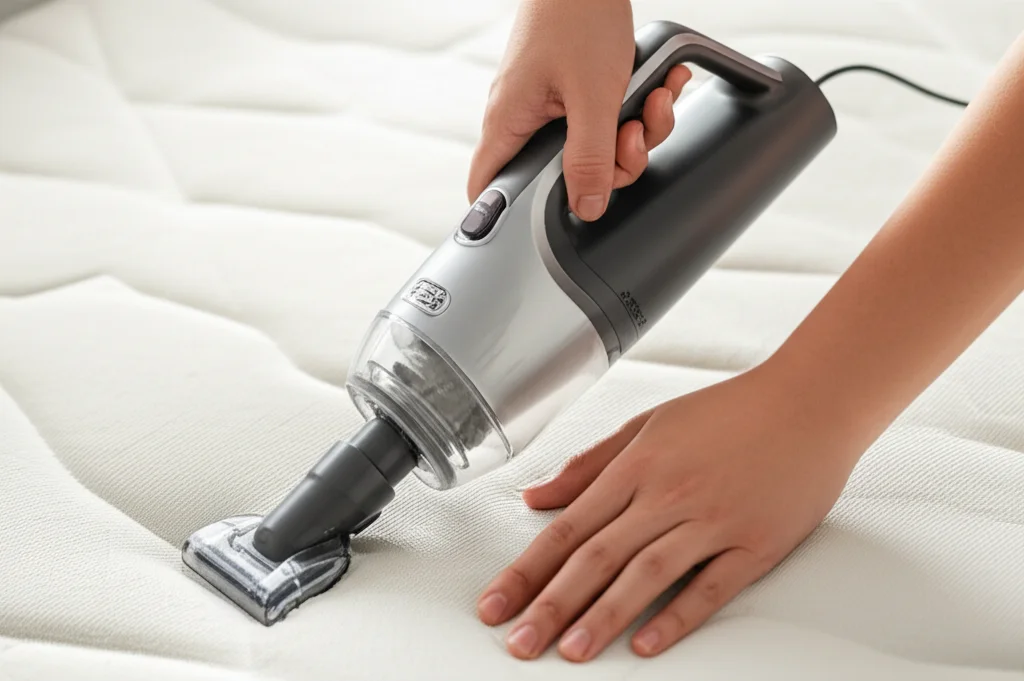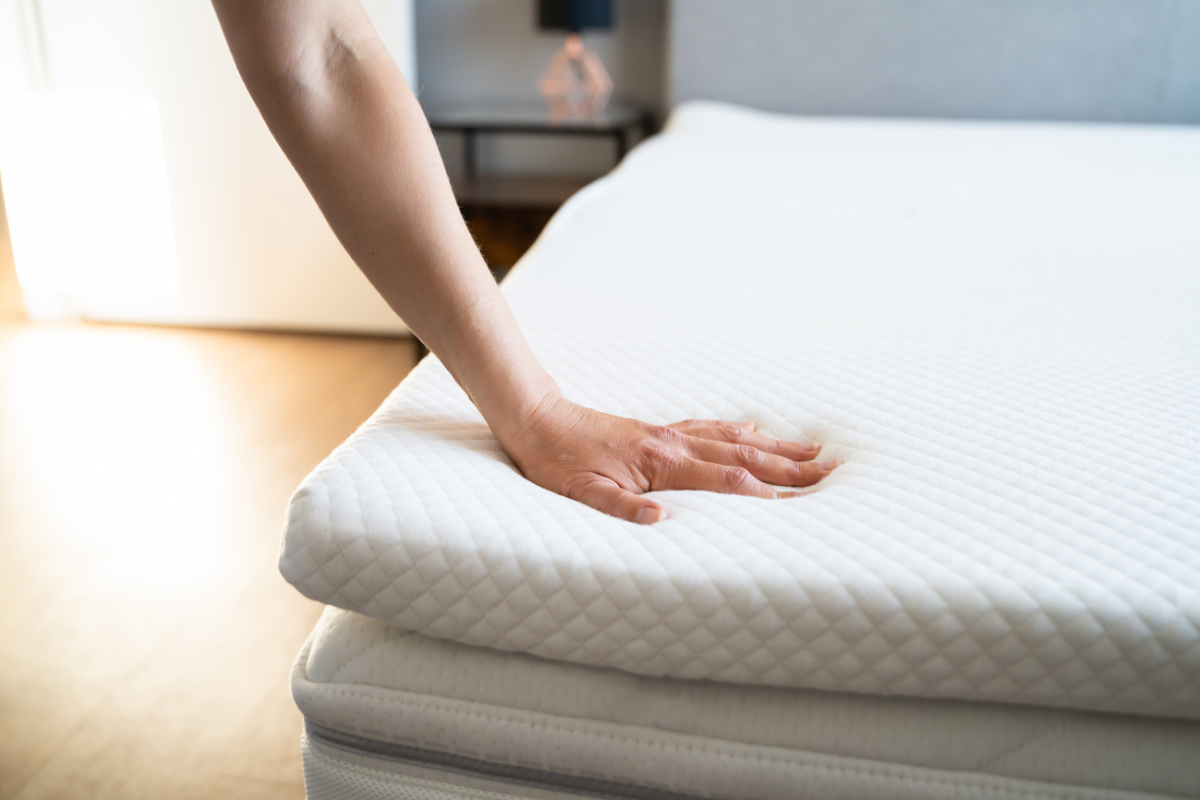
Ever tried fitting a memory foam mattress into a tight spot, only to find it’s a few inches too big?
Forcing it won’t work, and cutting it feels risky. But with the right tools & technique, you can resize it without losing the comfort.
Memory foam is easy to shape if you handle it carefully.
In this guide, I’ll show you how to cut your mattress to size, whether for a campervan bedding, for DIY cushions and pillows, or splitting a king size piece of foam into multiple smaller mattresses – so you get it right the first time.
First of All, Should You Even Cut Your Memory Foam Mattress?
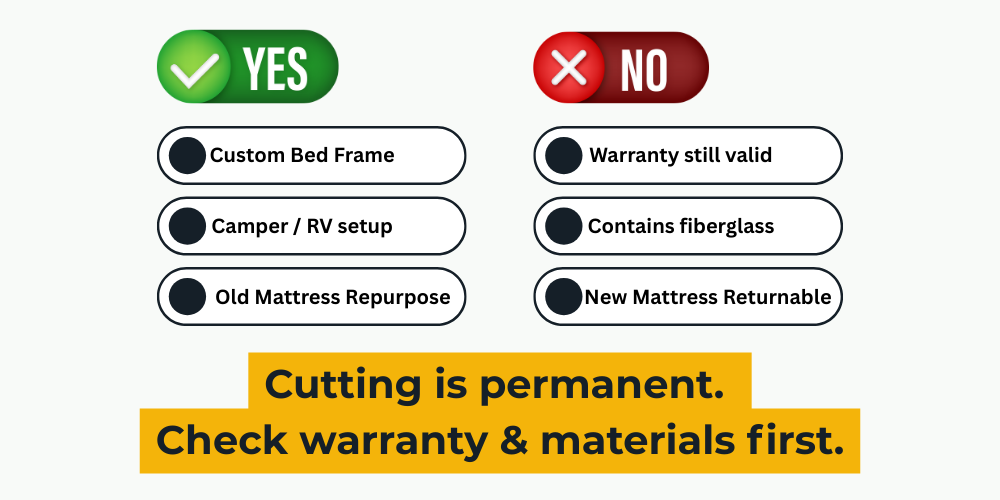
Once you cut it, there’s no going back.
The warranty will almost always be void, and if not done right, you can lose comfort and support.
Also, avoid cutting if it’s brand new and still within its trial period. Go for return or exchange instead.
Check for Fiberglass & Other Materials
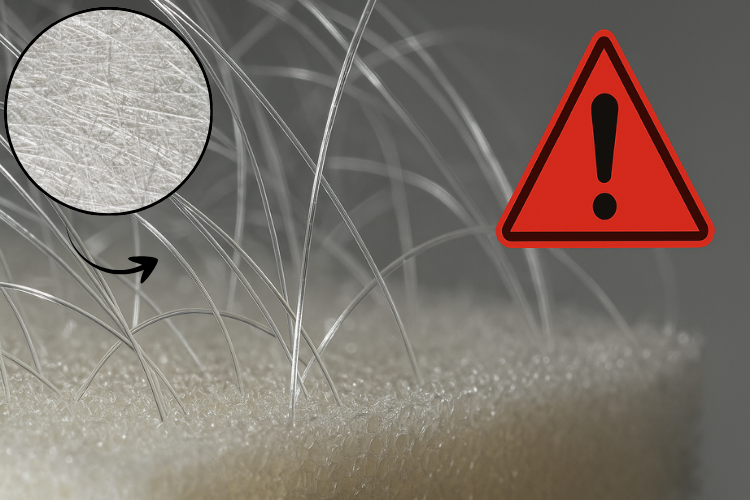
Most importantly, check what’s inside your mattress. Unzip or remove the cover to see the foam layers and any extra materials inside.
Some mattresses use fiberglass for fire protection. Check the label on mattress or contact the manufacturer to confirm before cutting.
Fiberglass can spread easily and be harmful if inhaled, so avoid cutting if it is present.
Many memory foam mattresses have multiple layers, cooling gels, or covers shaped for specific purposes. Always inspect these components so you know the exact materials and thicknesses you will be cutting.
Be Aware: Cutting the Foam layers or materials can make the mattress less breathable or cause the edges to come apart.
What Do You Need to Cut a Memory Foam Mattress?
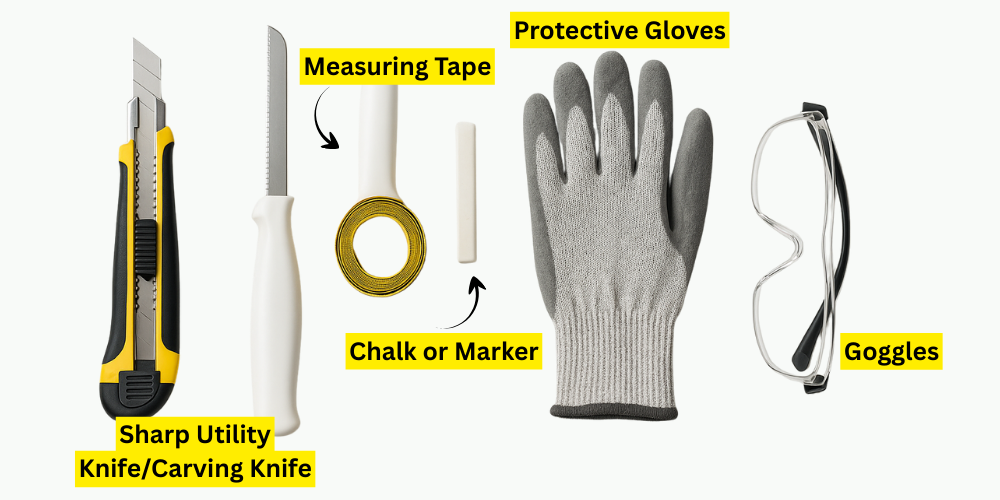
When it comes to cutting a memory foam mattress, having the right tools can make all the difference between a clean, smooth cut and a jagged mess.
1. Sharp Utility Knife or a Electric Carving knife – For best results, choose a utility knife with a retractable, replaceable 9mm or 18mm snap-off blade made of high-carbon steel for cleaner cuts, or an electric carving knife with an 8–9 inch stainless steel.
Electric knives glide through foam effortlessly, while utility knives work well for smaller adjustments (always use a fresh, sharp blade).
2. Measuring tape – Don’t guess. Measure the length and width you need twice before marking.
3. Chalk or Marker – Chalk removes easily and leaves no residue. You can also use a dark, fine-tip marker for precise lines on light foam.
4. Large flat surface – A sturdy table or the floor works best. The foam needs to stay flat so you don’t get uneven edges.
5. Protective gloves and safety goggles – Gloves protect your hands from accidental slips, and goggles keep stray foam particles out of your eyes.
Get everything set up before you start, so you can focus on making one smooth, steady cut without having to stop midway.
Step-by-Step Guide to Cut a Memory Foam Mattress
Cutting a memory foam mattress can be straightforward if you prepare properly & follow each step with care.
Rushing can lead to uneven edges or damage to the foam, so take your time for the best results.
- Prepare the Mattress
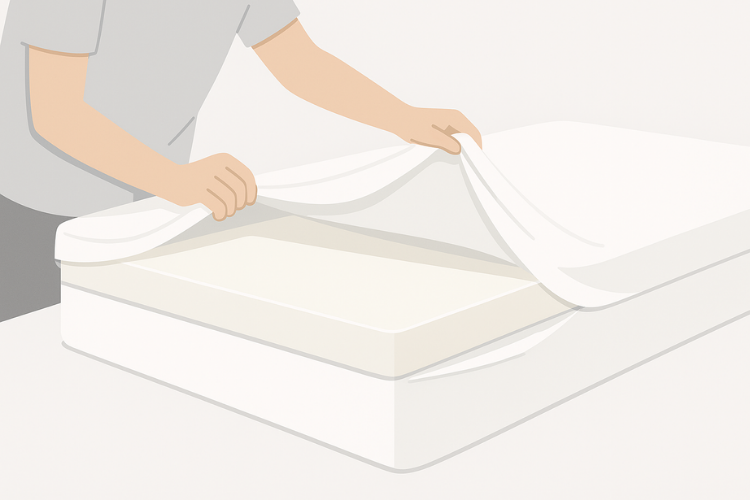
- Remove all covers, protectors, or encasements so you can access the foam directly. This prevents fabric from catching or tearing during cutting.
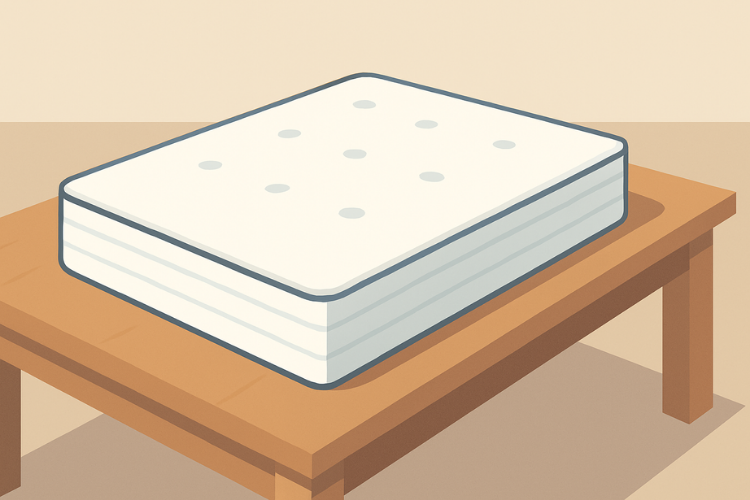
- Place the mattress on a flat and stable surface, such as a large workbench or clean floor space, to keep it from shifting. You can have someone to hold it to prevent frequent shifting.
- If the mattress is thick, position it so the section to be cut hangs slightly over the edge. This makes it easier for the blade to pass through without resistance and helps you maintain a straight line.
- Measure and Mark
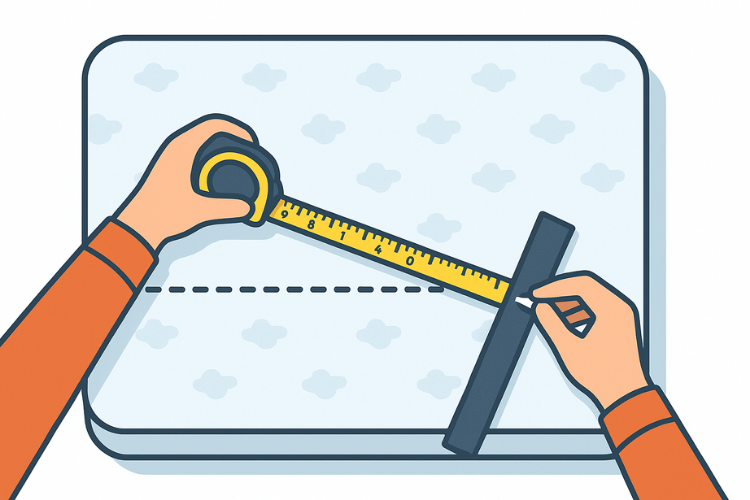
- Measure the desired length and width at least twice to confirm accuracy. Even a small miscalculation can affect the fit of your mattress.
- Use a ruler or yardstick to draw a precise line with the chalk. You can also use a washabke marker. A clear marking ensures you follow an exact path, reducing the risk of uneven cuts.
- Mark both the top and sides of the mattress so you can keep your cut aligned from every angle.
Do not press the foam too hard while measuring as it may give an inaccurate measurement.
- Make the Cut
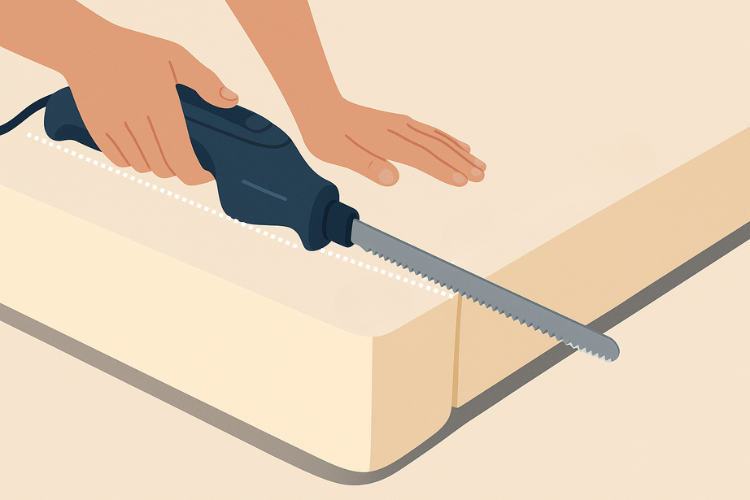
- Hold your knife at a consistent angle, ideally perpendicular to the foam for a clean vertical cut. Angle slightly only if shaping or tapering the foam.
- Keep your wrist steady and apply even pressure. Avoid pressing too hard, which can compress the foam and make the cut uneven.
- Use long, smooth strokes in one direction instead of short sawing motions to minimize tearing. Stop occasionally to remove foam debris from the blade, which helps maintain sharpness and accuracy.
- If you are using an electric carving knife, let the blades do the work. Guide it slowly along your marked line without forcing it, keeping both hands steady for maximum control & safety.
- Check and Smooth the Edges
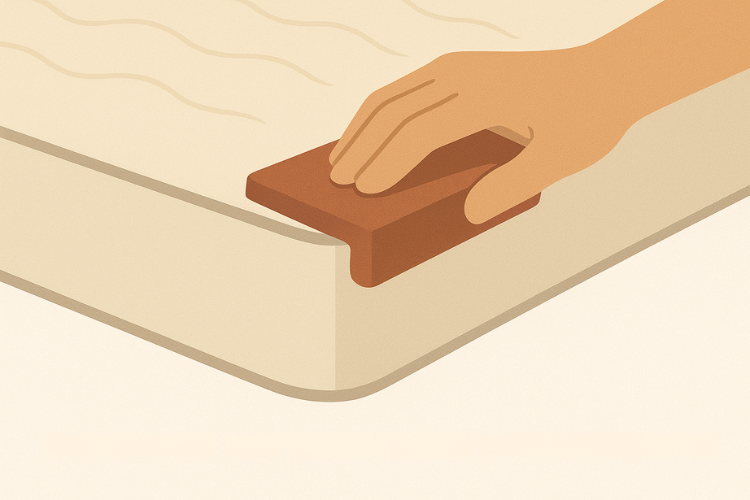
- After cutting, inspect the edges for uneven spots or jagged areas.
- Trim rough sections with light, precise strokes until the edge is smooth and uniform.
- For a professional finish, you can lightly sand the cut edge with fine-grit sandpaper, but avoid excessive pressure.
- Reassemble or Use the Foam
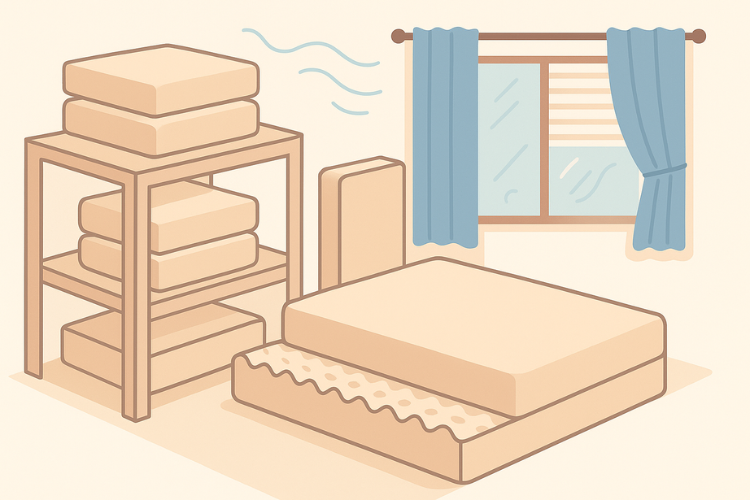
- If this is part of a mattress resizing, replace covers, protectors, or encasements before use.
- For foam being repurposed (like cushions, padding, or smaller bed sizes), store it in a dry, well-ventilated area away from the direct sunlight to maintain the foam quality.
Tips for a Clean and Precise Cut
What actually works:
- Use an electric carving knife for thick foam – worth every penny for pieces over 2 inches. Serrated blades glide like butter through memory foam far better than kitchen knives.
Freeze the foam for 1–2 hours – it firms up the structure so the blade slices cleanly instead of squashing it.
Swap dull blades immediately – if you see ragged edges, don’t push harder. A fresh blade saves you hours of sanding.
Go slow and steady – about 2–3 inches per second is the sweet spot. Rushing is the fastest way to get wavy lines.
Mark before you cut – I always use a pen and a metal straightedge to guide my blade. Those few seconds of prep prevent inches of regret.
Mistakes to avoid (learned the hard way):
Cutting without marking a line first – Guessing always leaves pieces uneven.
Pressing down too hard – it only compresses the foam and ruins the cut.
Using a kitchen knife for thick foam – it tears more than it cuts.
Letting foam sag mid-cut – always support it fully on a flat surface.
Cutting against the grain – check the foam’s orientation to prevent rough, crumbly edges.
Patience is your best tool here.
If you prep well, use the right blade, and let the knife do the work, you’ll end up with edges that actually fit together.
No sanding, No swearing, No wasted foam.
After-Cut Care and Reassembly
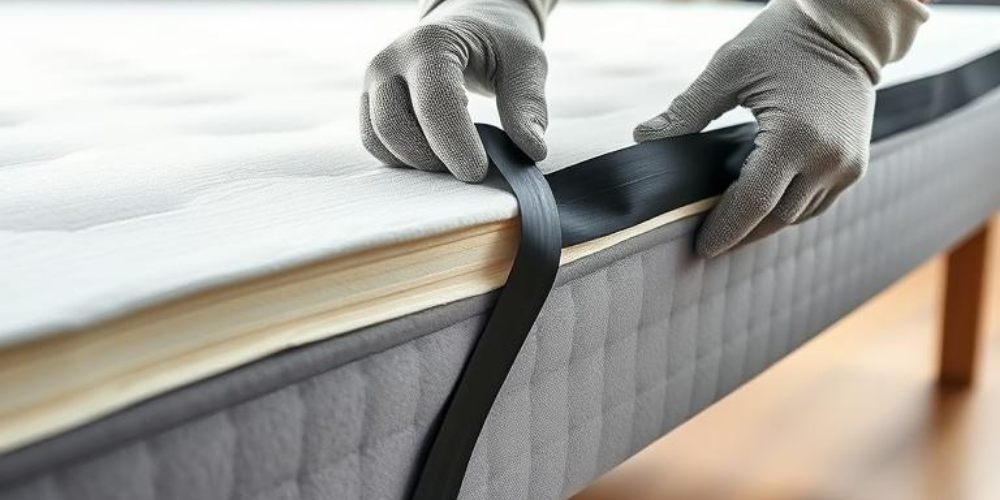
The work doesn’t end when you put down the knife – and this is where I’ve seen people mess up what was otherwise a perfect foam modification job.
Here’s what I’ve learned about finishing the job right:
- Reattach or replace the mattress cover – sounds obvious, but I’ve rushed this step and paid for it. If you’re working with a zippered cover, make sure it still fits properly after your cuts. You can sew it to fit to size. Don’t Rush. Sometimes you need to get a new cover that matches your modified dimensions.
- Seal raw edges with fabric tape when needed – this isn’t always necessary, but if you’ve exposed foam that’ll get regular contact, seal it up. I use 2-inch fabric tape on edges that might rub against bed frames or get handled frequently. This prevents crumbling and also extends the life of the mattress.
- Test everything before calling it done – At least spend 15-20 minutes. lying on the mattress in different positions. I once thought I nailed a firmness modification only to discover a weird dip that made sleeping impossible.
Better to catch issues now than at 2 AM. Check for any uneven spots or areas where pieces don’t align properly. Press down on seams to make sure everything’s secure.
Your back will thank you for taking this extra step seriously.
Make sure your mattress stays fresh and clean after resizing. Read our guide on how to clean a memory foam mattress.
Alternatives to Cutting a Memory Foam Mattress
Before I picked up that kitchen knife, I wish someone had told me about these alternatives. Cutting foam is permanent – there’s no going back if you mess up.
Sometimes the better route is avoiding the cut altogether:
- Buy a custom-size mattress from the manufacturer – yeah, it costs more upfront, but many companies offer custom dimensions for just $100-200 extra.
- Use a mattress topper instead – If you are looking for extra firmness or a different feel, a 2-3 inch topper can solve most comfort issues without touching your original mattress. Way less risky than surgery.
- Adjust your bed frame or foundation – sometimes the easiest fix is modifying what’s underneath. I’ve seen people buy adjustable frames or add platform supports rather than resize perfectly good mattresses.
The topper route saved my bacon when I needed to soften a too-firm mattress for a client. It costed $150 versus potentially ruining a $800 mattress with bad cuts.
FAQs
1. Can I use giant scissors to cut my memory foam mattress?
No. Giant scissors aren’t strong or sharp enough for dense foam. They’ll leave jagged edges and can tear the material. A utility knife or electric carving knife is much more effective.
2. Can I cut my memory foam mattress horizontally in half?
It is not recommended. Cutting a mattress horizontally separates the supportive layers and ruins its structure. Memory foam mattresses are built with distinct top, middle, and base layers. If you cut across them, the mattress will lose its comfort and support.
3. Can a hot knife be used to reduce foam mattress size?
While a hot knife can technically cut memory foam, it’s not safe or recommended. The heat can melt the foam, create toxic fumes, and leave messy edges. For best results, use an electric carving knife or a sharp utility knife.
4. Can you cut a gel infused memory foam mattress?
Yes. You can cut a gel infused memory foam mattress in the same way as a standard one. Just remove the cover first and use smooth, steady cuts. Be aware that gel beads or layers may shift slightly while cutting.

